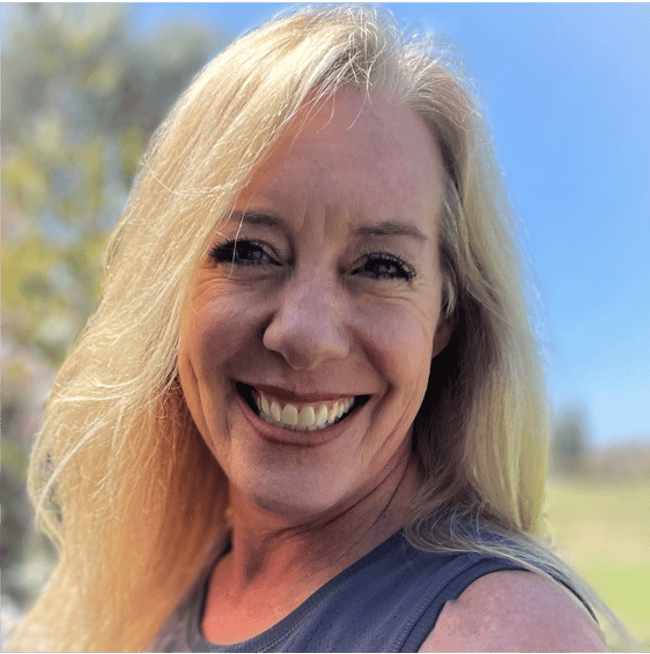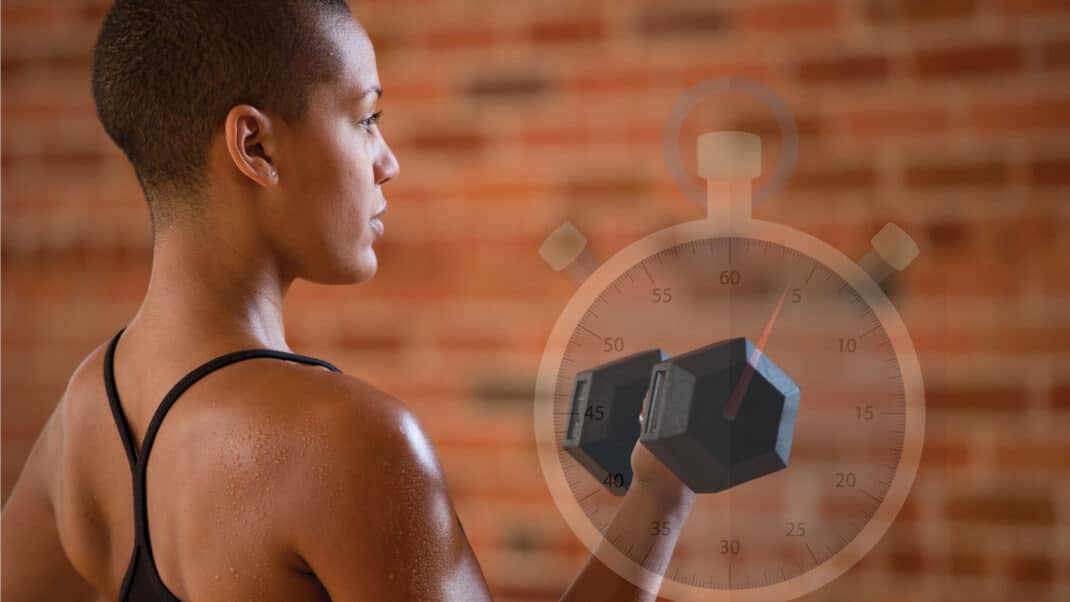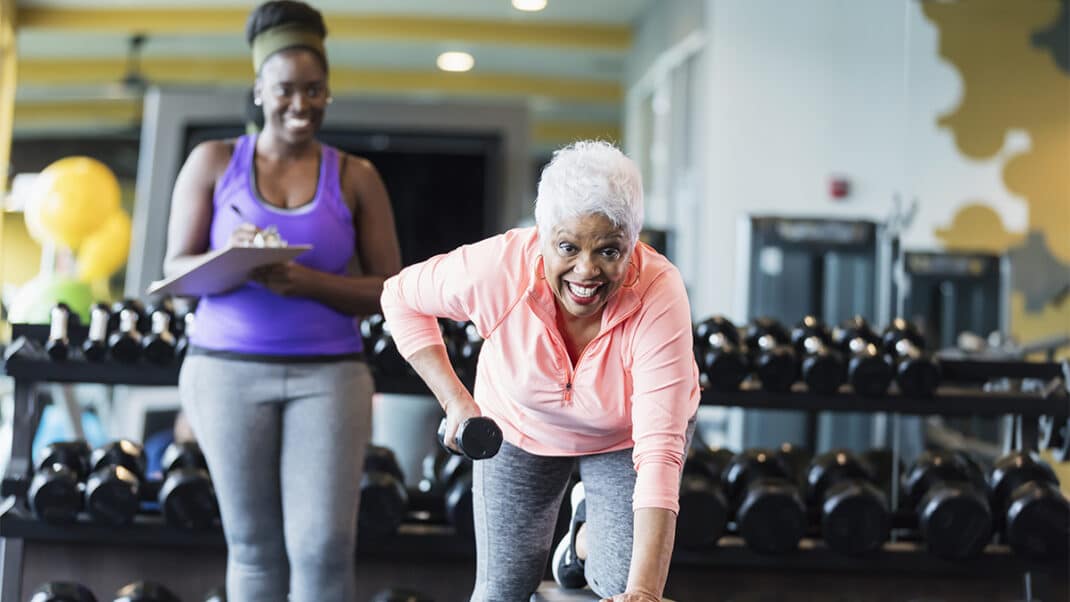2009 IDEA Fitness Programs & Equipment Trends
Facility managers and program directors maintain a conservative, but upbeat, outlook in the face of a difficult economy.
This year our 14th annual survey
went to club owners, fitness
directors and other fitness professionals
in the midst of a
financially unstable economy.While the
fitness market may not be booming, it
seems to be at least stable, which is great
news when businesses all around the
globe are faltering. The really encouraging
aspect of this year’s results is that the
diversity of classes, equipment and programs
offered has continued to increase.
This is critical, as the wide range of
services our industry offers needs to keep
pace with the growing diversity of the
populations we serve—including apparently
healthy adults, clients with injuries
and chronic disease, amateur and professional
athletes, seniors and children.
Overall, respondents have a positive attitude;
the survey found that the percentage
of respondents expecting growth was
generally higher than the percentage expecting
declines. Stability seems to be the
norm for most programs and equipment
on the survey.
The 130 IDEA business and program
director members who responded to the
survey can help us broaden our perspectives
on how we can continue delivering
high value and retain business in these financially
unstable times. These associates
report that an average of 75% of their
members/clients stay with the business
for 1 year or longer.How do they accomplish
this loyalty?
New Cardio Equipment
Options Surveyed
We added two new categories to the cardio
machines portion of the survey this
year: arm ergometers and indoor rowing
machines. Almost a quarter of the facilities
surveyed (24%) offer arm ergometers,
while 42%have indoor rowing machines.
Treadmills, offered by 71% of facilities,
are still the most common piece of cardio
equipment,with recumbent cycles (68%)
and elliptical trainers (67%) close behind.
Survey data shows that cardiorespiratory
equipment has seen some of the largest
declines in usage over the past 9 years,
ranging from -10 (recumbent cycles) to
-28 (stair climbers) percentage points.
Exploring New Ground in
Personal Training
Personal training, adult, one-on-one,
again leads this category,with 89%of respondents
offering it. Increases over the
past 9 years have occurred in all personal
training categories, with the greatest improvements
reflected in personal training,
2 clients share, which rose from 56% in
2001 to 79% in 2009, and in personal
training, 3–5 clients share, which rose
from 34% in 2001 to 60% in 2009.
Small-group boot camps and small group
circuit training were added to this
year’s personal training category.Weighing
in at 47%and 55%, respectively, they
are offered by a good half of all managers
surveyed—and with reason. Sherri
McMillan, MSc, co-owner of Northwest
Personal Training in Vancouver,Washington,
and Northwest Women’s Fitness
Club in Portland,Oregon, has found that
when a client gets laid off or if finances
are tight, one of the first expenses a client
will look at eliminating is personal training.
“Savvy managers prepare their business
for these types of conversations and
situations,” she said. “Many have found
that incorporating small-group training,
such as boot camps or circuits, into programming
provides a more cost-effective
option for clients. Clients don’t have to
give up training altogether, and at the
same time, training departments can generate
more revenues during the same
amount of time. It’s a win-win!”
Technology: Are We
Behind the Times?
While technology in our world is growing
at an astonishing rate, it seems as though
the fitness industry is lagging. Biray Alsac,
MS, fitness technologist and owner of
FITTmaxx Institute in Chandler,Arizona,
believes that when it comes to adopting
new technologies, fitness professionals are
not alone in their hesitation. “New technologies
require additional time to learn
and can often be a costly investment,” she
points out.“And in the state of our global
economy, time and money are two resources
most people cannot afford to
waste without guaranteeing some return
on their investments.”
The survey shows that a little more
than half of the respondents use online
client reminders and information for
their clientele (51%). Software programs
for computer workout tracking (17%),
nutritional analysis (16%) and online
training programs (15%) are offered by
less than a quarter of the facilities surveyed.
Just 10% offer interactive computer
training programs (exergaming).
Alsac further observes that “besides
corresponding with clients and colleagues
via technology (such as e-mail or text
messaging), fitness professionals have successfully
made their face-to-face efforts
and hands-on approach to training a priority—
it is in their kinesthetic DNA.
However, the technologies in today’s digital
age are quickly enhancing multiple
fitness initiatives and expanding the industry’s
professional and global reach.
The technological developments in the
coming decade will be less about ‘this new
software’ or ‘that piece of hardware’ and
more about how these tools will effectively
impact the cultural and social
norms of our anthropology. In essence,
ignoring or resisting technological trends
may keep business static in a dynamic
market and fitness professionals less relevant
to their digitally savvy audience.”
Pilates Still Tops in Mind-
Body Programming
Pilates has steadily increased as a mind-body
offering over the past 9 years, going
from 47% to 70%. On average,
facilities offer 14 Pilates and yoga classes
per week,with an average of 13members
attending each class. Pilates equipment
has also enjoyed an increase in usage,
from 29% to 44%, over the 8 years in
which it has been surveyed, although the
growth in equipment use has not been as
robust as that seen in programming. This
difference can be explained by facilities
offering only mat-based programs as opposed
to equipment-based sessions.
Yoga programs and equipment have
both shown a slight decline over the years,
from 69% to 62% and 73% to 70%, respectively.
Interestingly, mind-body fusion
programs have declined from27%to
16%over the past 2 years, but themajority
of facilities that offer these options believe
the format is growing (81%).
Equipment Use
Generally Seen as Stable
What does the survey tell us about the future
of our equipment offerings? Once
again, the focus is on equipment that is
small, portable and versatile. Resistance
tubing or bands (94%), stability balls
(92%), barbells and/or dumbbells (91%),
foam rollers and small balls (81%), balance
equipment (80%) and medicine balls
(79%) are offered by most facilities surveyed.
Overall, these results reflect a desire
for portability and versatility in our equipment,
a shift to more functional exercise
and less emphasis on big, bulky pieces that
emphasize one-dimensional movement.
This year’s respondents are expecting
balance equipment and suspension training
apparatus to gain in popularity, with
55% and 52% anticipating growth in
their usage, respectively. These are the
only two categories in which more respondents
expect growth than expect no
growth or a decline in usage.Most equipment
is thought to be stable in its usage,
with very few pieces of equipment expected
to decline to any large extent. The
largest declines were reported for stair
climbers (25%), pneumatic machines
(20%) and interactive computer training
programs (20%).
Fraser Quelch, director of training and
development for Fitness Anywhere (TRX)
in San Francisco, explains his view on the
trend toward more portable equipment:
“Small, portable equipment is very popular
now, due to economics and trends
within the industry. Clubs are looking
for cost-effective ways of increasing retention,
attracting new members and
augmenting non-dues revenue. They are
interested in creating new, exciting programs
that meet the needs of many with
minimal costs and that impact multiple
revenue-generating areas. For the cost of
two new treadmills, you could add an
entirely new line of small equipment that
would support personal training, boot
camps, special interest activities [such as
marathon training, triathlon training,
etc.], group exercise and ‘on the floor’
express programming. The increasing
acceptance and integration of functional,
movement-based training, where these
tools truly excel, also explains why balance
and suspension equipment have
such significant growth expectations.”
Working as a Community
Disseminating health education and fostering
family support are steps that many
of our colleagues are taking as they share
the responsibility of helping a vast number
of unhealthy individuals get back on
track. Educating local communities also
provides a way to creatively increase business
opportunities.
This year’s survey shows that family
and community health education is clearly
prevalent in the industry.Respondents are
offering nutrition coaching (47%),weight
management classes (38%) and clinics on
special topics (64%). In addition, they’re
getting the whole family—as well as the
community at large—involved by conducting
kids’ fitness programs (31%),
teen fitness programs (30%), health fairs
(44%) and social activity groups (walking
or running clubs, group trips, organized
group activities) (45%).
Fifty-seven percent of surveyed facilities
also conduct community outreach
events. Bethany Diamond, founder of
Ovarian Cycle Inc., in Marietta, Georgia,
started a program to reach out to her
community. “Our main fundraiser is a
6-week training program on indoor bikes,
culminating in a 6-hour, indoor ‘century’
ride,” she explains.“Among all participants
who ride with us, we attract folks that
haven’t ridden a bike in years and years.
We attract women who are undergoing
chemo. Some of our riders become instructors,
triathletes and outdoor cyclists.
Ovarian Cycle: Ride to Change the Future
brings folks to fitness! Our community
outreach program changes not only the
lives of those who participate but also [the
lives of] those we raise money for.”
Group Exercise Classes
Attract Members!
Group exercise classes provide a valuable
service to our clientele. The average number
of group exercise classes on the schedule
is 39, with approximately 14 people
participating per class, which equates to
546 members per week entering the
group exercise room.
Abbie Appel, group fitness programming
consultant in Boca Raton, Florida,
calls the group fitness department the
“heart” of the club.“Classes create energy
and excitement that no other department
is able to replicate,” she says. “Studies
show that group fitness classes drive
members to fee-based programs offered
by the club and that members who partake
in group fitness are more likely to
stay active participants in the club. It’s all
about creating relationships in a fun atmosphere
and delivering customer service
that exceeds their expectations.”
While group exercise participation remains
steady, class format offerings are
dynamic. The past nine surveys have seen
increases in abdominals classes, core conditioning
classes, indoor cycling and
dance; however, aerobics classes (including
high-, low- and mixed-impact), step
aerobics, combination/hybrid classes,
boxing-based/kickboxing sessions and
martial arts–based aerobics have all declined.
Sara Standerford, area group exercise
manager for 24 Hour Fitness in
Costa Mesa, California, suggests that
managers need to be flexible but also
cognizant of class metrics and staffing
when making changes. “As new formats
make their way into the clubs,we need to
log off certain classes to make room on
the schedule. The choice to remove a
class is determined by class attendance
and the number of instructors able to
teach the format. Typically, attendance
has been smaller in the traditional and
step aerobics classes. Also, our new instructors
have chosen to specialize in the
latest formats (dance, core, etc.) instead
of classes such as high-low or step aerobics, leaving fewer instructors to teach
those methods.”
Rochelle Schwab, director of faculty
and staff fitness at Oregon State University
in Corvallis, also suggests that diversity
is the key to a successful group
exercise schedule. “When you leave out a
format or focus on just certain types of
formats, you may be missing something
that the members want,” she advises.
“Having a variety of classes on the schedule
that cover all the elements of fitness,
cardiorespiratory training, strength, flexibility
and balance means that there is
something for everyone.”
Looking to the Future
In these fiscally uncertain times, the fitness
industry continues to look for ways
to provide quality services to the community.
We are reaching out to our clientele
by offering a means to promote not only
fitness but also general well-being.
The survey shows that in our quest to
do this, a key ingredient for facilities is
personal training. It can be structured for
individuals, partners or small groups, allowing
clients the freedom to tailor the
cost to fit their budgets. It also offers a
choice of workout practices, and sessions
can be performed indoors or outdoors.
Moreover, a variety of equipment is used
within training sessions,with the greatest focus being on small, easily transportable
equipment.
Group exercise offers many formats to
meet the needs of a diverse facility population.
There are classes for beginner to
advanced members; for sport-minded individuals;
for members craving a connection
between mind and body; and for
those who want to develop cardiorespiratory
endurance, strength, flexibility, balance
or all of the above.
Providing educational and social
opportunities for our clientele may help
foster a sense of community in these difficult
times.Allowing clients to be part of
a group can reduce anxieties in other
parts of their lives.What’s more, a community
atmosphere may inspire clients to
continue the healthy habits they have
worked so hard to develop.
In short,maintaining customer service
through sound practice in personal
training and group exercise and fostering
creativity through community engagement
will help to advance your business,
despite the changing economy.
% of respondents describingthe type of people their companycurrently serves.
| Apparently healthy people | 98% |
| Those with chronic or temporary injuries | 82 |
| Those with special medical needs (e.g., diabetes or coronary artery disease) | 82 |
| Seniors (65 and over) | 75 |
| Amateur athletes | 68 |
| Children and teens | 60 |
| Those with physical disabilities | 66 |
| Professional athletes | 24 |
| Women only | 20 |
The 10 programs most predicted to grow are generally offered by less than half of therespondents. The current growth rates are lower than in previous years.
| Yes I Offer This* And … | I Believe It Will Grow** | |
| Mind-body fusion | 16% | 81% |
| Teen fitness (e.g., classes or after-school camps for 13-17 years) | 30 | 61 |
| Online client reminders and information) | 51 | 57 |
| Social activity groups (walking or running clubs, group trips, organized group activities) | 45 | 55 |
| Seniors’ classes | 55 | 55 |
| Small-group classes on machines | 32 | 55 |
| Combination/Hybrid classes | 36 | 54 |
| Dance (e.g., urban street, funk, hip-hop) | 39 | 52 |
| Small-group boot camps | 47 | 52 |
| Boot camp classes, indoor | 51 | 49 |
| Group activities, outdoor | 32 | 49 |
| Small-group classes, 8 people or fewer | 58 | 49 |
*% of IDEA business and program director members offering the activity.
**% of those who offer the activity.
In this year’s survey, respondents were less supportive of equipment growth than in previousyears. Just two of 10 pieces of equipment garnered more than a 50% vote for growth.The 2008 survey posted seven pieces above 50%.
| Yes I Offer This* And … | I Believe It Will Grow** | |
| Balance equipment (e.g., BOSU® Balance Trainers,disks, wobble boards, balance boards) | 80% | 55% |
| Suspension training apparatus(TRX®, Inkaflexx® straps, etc.) | 25 | 52 |
| Foam rollers and small balls | 81 | 48 |
| Pilates equipment | 44 | 43 |
| Child-sized machines | 5 | 40 |
| Computer training programs, interactive | 10 | 40 |
| Elliptical trainers | 67 | 39 |
| Cycles, for indoor classes | 45 | 38 |
| Computer workout tracking | 17 | 37 |
| Medicine balls | 79 | 36 |
*% of IDEA business and program director members offering the equipment.
**% of those who offer the equipment.
Jan Schroeder, PhD
Jan Schroeder, PhD, is a professor and past chair of the department of kinesiology at Long Beach State University. She coordinates and teaches in the fitness and integrated training undergraduate program and has written 60+ articles on exercise physiology/fitness. She is also a certified group exercise instructor who teaches weekly in the private sector. Schroeder is the recipient of the 2021 IDEA Fitness Leader of the Year Award.






